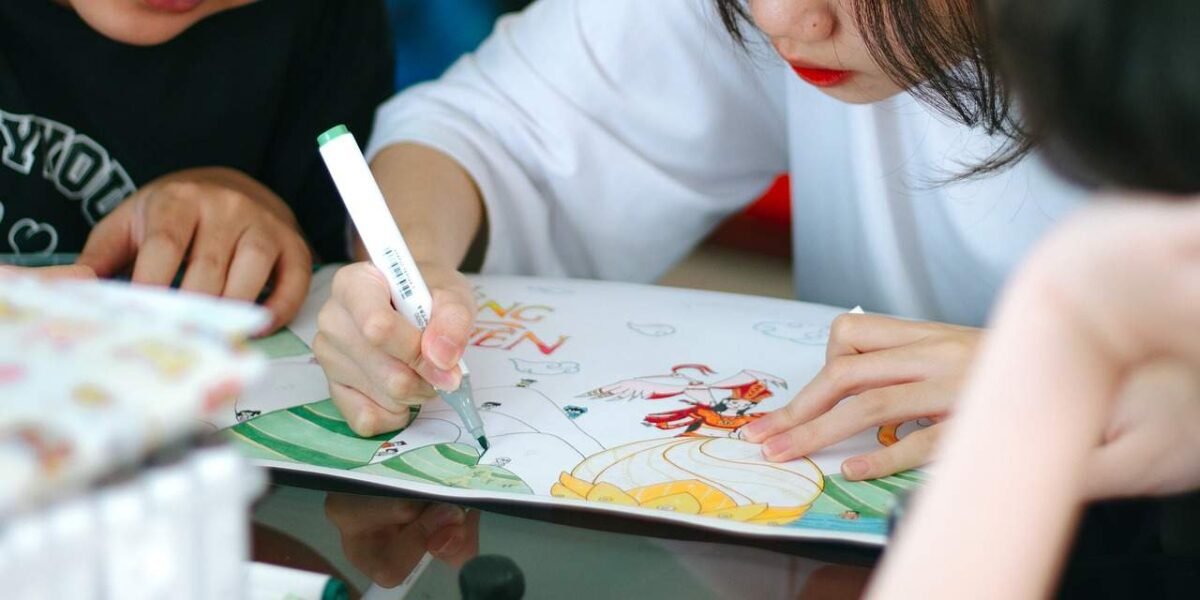What is the Power of Early Childhood Care and Education? In today’s rapidly evolving and competitive world, the journey toward success in the business realm begins long before adulthood. Early childhood education plays a pivotal role in shaping the foundation for future achievements by equipping young minds with essential skills and fostering an entrepreneurial mindset.
Nurturing Business Success from an Early Age: The Power of Early Childhood Education
From developing communication and cognitive abilities to cultivating leadership and problem-solving skills, the impact of early education extends far beyond the confines of the classroom. In this article, we explore how early childhood education serves as a powerful catalyst in preparing children for business success later in life. By nurturing their talents, igniting their curiosity, and instilling invaluable qualities. We empower the next generation to thrive in the dynamic and ever-changing business landscape.
Development of Essential Skills
Early childhood education serves as a crucial platform for the development of essential skills that are integral to success in the business world. Also, During these formative years, children’s minds are receptive and malleable. Making it an opportune time to lay the groundwork for their future endeavors.
Communication and Language Skills
One of the fundamental pillars of business success is effective communication. Also, Early childhood education provides children with the opportunity to acquire a rich vocabulary, develop language proficiency, and hone their listening and speaking skills. Through engaging activities, storytelling, and interactions with peers and teachers, children learn to express themselves confidently and articulate their ideas clearly. These communication skills serve as the bedrock for building strong relationships, negotiating with others, and presenting ideas persuasively in the business realm.
Cognitive Skills
The development of cognitive skills during early childhood is paramount to cultivating the analytical and problem-solving abilities crucial for business success. Through engaging in hands-on activities, puzzles, and games, children enhance their critical thinking skills. Also, Learn to approach challenges with creativity, and acquire a solid foundation in mathematical and logical reasoning. These cognitive skills lay the groundwork for future entrepreneurs. Enabling them to identify opportunities, strategize effectively, and make sound decisions in the face of uncertainty.
Social and Emotional Skills
In the dynamic business landscape, social and emotional intelligence are invaluable assets. Also, Early childhood education plays a vital role in fostering the development of these skills. By creating a nurturing and inclusive environment, educators teach children to build self-confidence and self-esteem, navigate social interactions, and collaborate with others. Learning empathy, emotional regulation, and conflict resolution at a young age equips individuals with the emotional intelligence necessary to navigate complex business relationships, lead teams, and adapt to diverse work environments.
Cultivating an Entrepreneurial Mindset
Beyond the acquisition of essential skills, early childhood education plays a crucial role in fostering an entrepreneurial mindset in children. An entrepreneurial mindset cultivates a unique set of attitudes and behaviors. That is highly advantageous for navigating challenges and seizing the opportunities presented in the business world.
Encouragement of Curiosity, Exploration, and Risk-Taking
Early childhood education environments encourage children to be curious, explore their interests, and take risks. By providing hands-on experiences, promoting curiosity-driven learning, and encouraging children to ask questions, educators instill a sense of wonder and a thirst for knowledge. Also, This curiosity becomes the fuel that drives future entrepreneurs to seek innovative solutions, identify untapped markets, and challenge the status quo.
Additionally, early childhood education environments foster a safe space for children to take risks and learn from their experiences. By encouraging them to try new activities, overcome obstacles, and embrace failures as learning opportunities. Also, Children develop resilience and a willingness to take calculated risks—a vital trait for entrepreneurial success.
Promotion of Resilience, Perseverance, and Adaptability
The path to business success is often paved with obstacles, setbacks, and unforeseen challenges. Early childhood education instills in children the values of resilience, perseverance, and adaptability. Through age-appropriate tasks and activities that require problem-solving and persistence, children learn to overcome obstacles. Develop resilience in the face of adversity, and adapt their approaches when confronted with changing circumstances. These qualities enable future entrepreneurs to navigate the uncertainties and complexities of the business world with determination and grace.
Fostering Creativity, Imagination, and Innovative Thinking
Creativity and innovation are at the heart of entrepreneurship. Early childhood education nurtures children’s innate creativity, imagination, and innovative thinking. Through art, imaginative play, and open-ended activities, children are encouraged to think outside the box, explore unconventional solutions, and embrace their unique perspectives. Also, This fosters a creative mindset that allows future entrepreneurs to envision new possibilities, develop groundbreaking ideas, and pioneer innovative products or services.
Financial Literacy
A solid understanding of money management and financial concepts is essential for business success. Early childhood education provides a valuable opportunity to introduce children to the fundamentals of financial literacy. Equipping them with the knowledge and skills necessary to make informed financial decisions in the future.
Introduction to Basic Concepts of Money and Finance
Early childhood education programs incorporate age-appropriate activities that introduce children to basic concepts of money and finance. Through play-based scenarios, children learn about the value of money. Also, How to count and handle coins and bills, and the concept of saving and spending. These early experiences lay the foundation for developing responsible money habits and financial decision-making skills.
Teaching Responsible Money Management and Budgeting Skills
In early childhood education, children are introduced to the concept of budgeting and responsible money management. By engaging in simple financial tasks such as setting goals, saving for desired items, and making choices about spending. Children learn about the importance of prioritizing needs over wants, making wise financial decisions, and planning for the future. These skills build a strong financial foundation that is crucial for managing personal finances and later entrepreneurial ventures.
Cultivating an Understanding of Business and Entrepreneurship
Early childhood education programs also provide opportunities for children to explore and understand the world of business and entrepreneurship. Through age-appropriate activities and discussions, children learn about different types of businesses. The roles of entrepreneurs, and the concept of earning income through goods or services. This exposure helps children develop an early appreciation for entrepreneurship, inspiring them to think creatively and consider business ventures as they grow older.
By introducing financial literacy at an early age, early childhood education prepares children to navigate the financial landscape with confidence. These foundational skills provide a solid understanding of money management, budgeting, and the basics of business. Setting the stage for future success in entrepreneurship and financial independence.
















